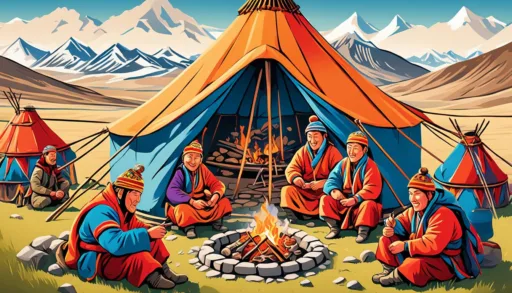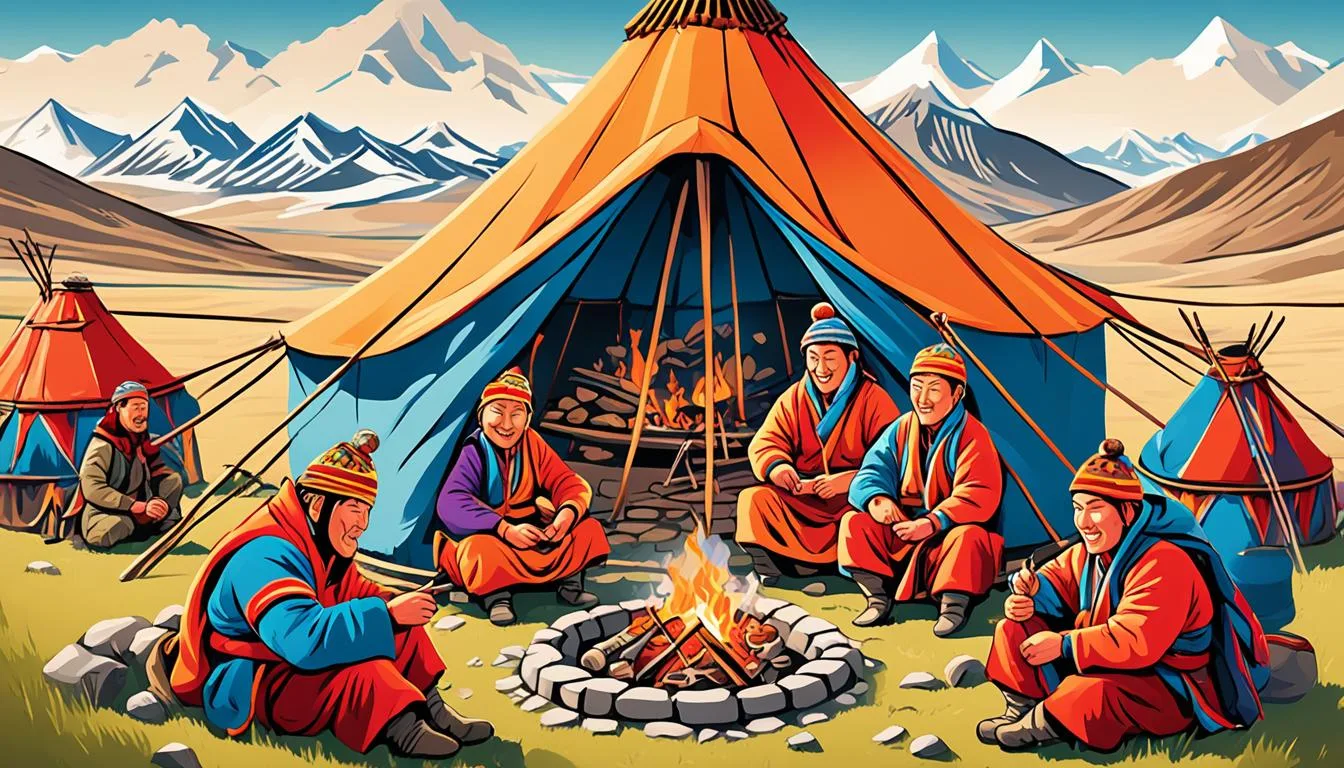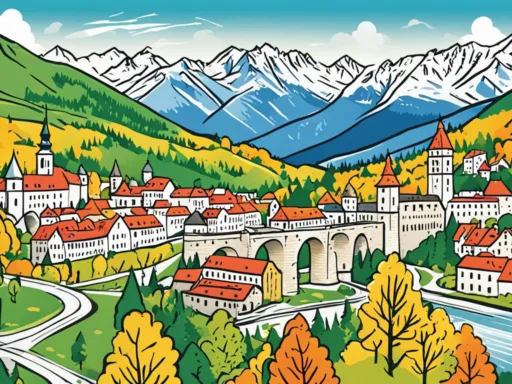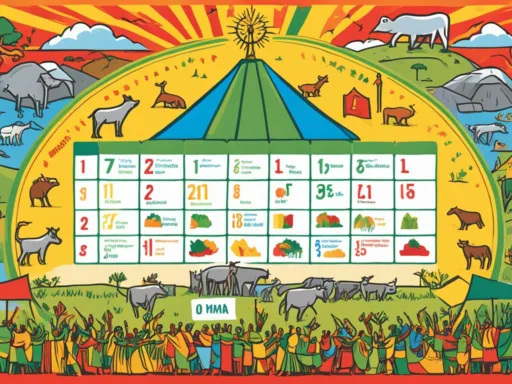When planning an adventure to the land of endless skies and nomadic hearts, timing is essential. Guided by seasons that transform the landscape and cultural tapestry, the best time to visit Mongolia is not merely a matter of preference, but an opportunity for immersion. While the lush, vivacious steppes beckon travelers during the Mongolia travel season of summer, Mongolia’s notorious winters promise an entirely different embrace. The Mongolian weather guide offers a tale of two extremes, but could it be that the frigid embrace of winter holds as much allure as the warm caress of a summer’s day?
Discover a land where the ideal season for a Mongolia trip might not align with common expectations. Here, the heart-warming hospitality and rich traditional heritage shine against the backdrop of an intimidating climate, providing an array of unique experiences that are often overshadowed by the country’s summer allure.
Key Takeaways
- Exploring the dual allure of Mongolia’s summer warmth and winter charms.
- Understanding how the Naadam Festival peaks tourist season in July.
- Unveiling the undisturbed beauty and intimacy of Mongolia’s off-peak winter season.
- Emphasizing the value of responsible tourism to support Mongolia’s local economy year-round.
- Highlighting the cost benefits and spontaneous adventures possible during the reduced tourist traffic of the colder months.
- Encouraging deeper connections through winter experiences with nomadic herders and their customs.
Best Time to Visit Mongolia: Weather and Cultural Events
When planning your Mongolia travel season, the key is to align your trip with both the optimal weather conditions and the rich cultural events that the country has to offer. Mongolia, a land of extreme climates and vibrant traditions, presents travelers with unique experiences that vary greatly from summer to winter. Let’s explore the top times to go Mongolia that promise both adventure and cultural enlightenment.
Summer Season: Naadam Festival and Verdant Steppes
Summer emerges as the peak Mongolia travel season, inviting visitors to witness the explosion of life on the steppes and partake in Mongolia’s Cultural Festivities. The highlight is undoubtedly the Naadam Festival, which epitomizes the spirit of Mongolia with its triumvirate of archery, wrestling, and horse racing. Historic in essence, contemporary in celebration, it is an event that captures the heart of the Mongolian people. The countryside flourishes, creating the perfect backdrop for this celebration of culture and athleticism.
With minimal rainfall, the summer offers temperate weather, ideal for exploring the lush landscapes. Whether you’re attending the famed festival or trekking through the rolling hills, the summer months extend an opportunity to witness Mongolia in its most accessible form.
Winter Wonders: Lunar New Year and the Realities of Nomadic Life
As the winter frost sets in, the landscape transforms into a breathtaking expanse of white, offering a travel experience like no other. The Mongolian Lunar New Year, or Tsagaan Sar, is a significant event, encompassing both the harshness and the beauty of winter with traditional garb, heartfelt gatherings, and a palpable sense of community. This period also offers the remarkable opportunity for eagle hunting, especially in the majestic Altai Mountains, providing a window into the age-old traditions that have defined the resilience of Mongolian nomads.
Despite requiring rigorous preparation for the extreme cold, those who brave the winter are rewarded with a candid look at the real Mongolia, far removed from the typical tourist experience.
Autumn’s Appeal: The Golden Eagle Festival and Pastoral Shifts
The arrival of autumn heralds the transition of the nomadic lifestyle as families prepare for the colder months, offering a captivating glimpse into the pastoral shifts of the Mongolian countryside. The Golden Eagle Festival, primarily held in the rugged terrains of western Mongolia, is a testament to the enduring partnership between humans and nature, featuring Kazakh eagle hunters showcasing their impressive command over these powerful birds.
Autumn is not just a time for celebration; it is a season that showcases Mongolia’s raw beauty and its people’s adaptability, making it a quintessential time for those seeking authenticity and rugged charm in their travels.
Each of these seasons carries its own allure, making the choice of when to go a reflection of one’s desires to experience Mongolia’s weather and cultural extravaganzas. So whether it’s to soak in the fervent spirit of the Naadam Festival, witness the deep-rooted traditions during the Lunar New Year, or be part of the enthralling Golden Eagle Festival, Mongolia awaits with open arms, to tell its timeless tales to those willing to venture into its vast lands.
Understanding Mongolia’s Seasons for Ideal Travel Planning
Embarking on a journey through Mongolia offers an opportunity to experience its strikingly vast landscapes that ebb and flow with the Mongolia travel season. Each phase of the year is a doorway to distinct customs, festivals, and natural wonders ideal for crafting an Ideal season Mongolia trip.

Spring in Mongolia ushers in a time of renewal. From late February to April, the country bursts with the energy of new life as baby animals dot the countryside. The Mongolian weather guide indicates the season to be brisk, with a palpable warmth foreshadowing the summer months. Traditional events such as the Ice Festival and the Thousand Camels Festival pepper the spring calendar, inviting travelers to immerse themselves in Mongolian culture.
- Ice Festival: Showcasing ice sculptures and winter sports on crystal-clear frozen lakes.
- Thousand Camels Festival: A celebration of Bactrian camels with races, parades, and cultural performances.
The summer months, stretching from May through July, are an apex in the Mongolian weather guide for travelers. Amiable temperatures make this period a favorite choice, with nomadic herders moving their camps in search of fresh pastures. The transition from summer to autumn is noted for its stunning foliage, a canvas of fiery hues accentuated by the preparations of nomadic communities for the impending winter.
| Season | Temperature Range | Key Activities |
|---|---|---|
| Spring | 0°C to 10°C | Festivals, Birth of Livestock |
| Summer | 10°C to 20°C | Nomadic Relocation, Naadam Festival |
| Autumn | -10°C to 10°C | Foliage, Nomadic Preparations |
| Winter | -20°C to -30°C | Lunar New Year, Snowy Landscapes |
And then, there’s the intense Mongolian winter, where temperatures plummet and a distinct serenity cloaks the land. References throughout the Mongolian weather guide stress the importance of being prepared for the extreme cold as mercury levels can dive below -30°C. In spite of, or perhaps because of, the frigid temperatures, Mongolia in winter is a marvel, home to intimate cultural events like the Lunar New Year Festival which offers rare glimpses into the endurance of Mongolian traditions.
Off-Peak Adventures: The Unique Charms of Winter in Mongolia
Embarking on a journey to Mongolia during the off-peak winter months unfolds an array of unparalleled experiences. As most travelers prefer the Mongolia travel season of summer, those who dare to visit during the colder times are rewarded with a rare glimpse into the enduring nomadic culture. Below the vast, crisp blue skies, the sprawling, snow-draped steppes invite adventurers for a truly sublime experience.
The characteristic Mongolian weather guide often includes stark warnings of the harsh winter conditions; however, this period is ripe with opportunities for a profound connection with Mongolia’s cultural heart. Not only can you witness the indomitable spirit of the herders, but you also have the valuable chance to partake in time-honored traditions within the cozy confines of a ger. This level of intimacy with the local way of life provides a travel memory that is tough to replicate in any other setting, truly defining the Best Time to Visit Mongolia for those seeking authenticity.
“As the winter snow blankets the vast Mongolian landscape, the nomadic way of life doesn’t cease, it just turns inward, fostering community ties and shared warmth.”
- Witness the daily routines of herders adjusting to winter’s demands.
- Experience traditional Mongolian hospitality around the stove in a ger.
- Observe the breathtaking beauty of frozen rivers and icy plains.
To maximize the winter experience in Mongolia, adventurers should be prepared to embrace the unexpected. Due to the unpredictable nature of Mongolian weather, staying flexible with travel plans is essential. Relying on experienced local guides not only aids in navigating the logistical aspects of winter travel but also enhances the journey through shared wisdom and insight into Mongolian customs and stories.
| Aspect of Winter Travel | Benefits | Considerations |
|---|---|---|
| Scenery | Stunning snowscapes | Daylight hours are shorter |
| Culture | Deep engagement with locals | Necessity to respect local customs |
| Wildlife | Unique sightings near settlements | Animals may be less active |
| Activity | Ice festivals, skiing, and sledding | Need for appropriate winter gear |
Whether it’s the serene silence of a snow-covered steppe or the thrill of attending a lively winter festival, Mongolia during the off-peak season reveals a different kind of allure, one that speaks to the heart of the traveler seeking solitude and connection. This unfiltered view into the resilience of Mongolian culture encapsulates the essence of why an off-peak adventure may indeed be the Best Time to Visit Mongolia.
Mongolia’s Cultural Festivities Through the Seasons
Embarking on a journey to Mongolia not only unveils a landscape of staggering beauty but also an opportunity to dive into the heart of Mongolia’s cultural festivities. As the Mongolia travel season presents an array of events, engaging with the country’s traditions offers a profound connection to its nomadic roots, heritage, and the local communities.
The Naadam Festival: A Summer Highlight
Witnessing the excitement of the Naadam Festival is an essential experience for any traveler visiting Mongolia in summer. It is the peak of Mongolia’s cultural festivities, intertwining sportsmanship with festivity. The festival’s central attractions are the “Three Manly Games of Mongolia”: wrestling, horse racing, and archery, which date back to the era of the Great Mongol Empire. The air buzzes with vibrant energy as athletes clad in colorful attire compete, portraying the strength and spirit of Mongolia.

The Golden Eagle Festival: Autumn’s Cultural Spectacle
As the Mongolian weather guide suggests, crisp autumn skies create the perfect backdrop for the Golden Eagle Festival. Hosted by the Kazakh people in the majestic Altai Mountains, it’s a time when golden eagles soar against a canvas of russet and gold. Eagle hunters display their skills, solidifying the festival’s reputation as one of the top times to go Mongolia if you’re seeking an authentic and awe-inspiring cultural display.
The array of festivals across the seasons cements Mongolia as a destination rich in tradition and spectacle. Whether engaging with the buzzing atmosphere of the Naadam Festival or standing amidst the mountainous vista of the Golden Eagle Festival, visitors are sure to find a journey that resonates with the pulse of Mongolia’s vibrant heart.
Conclusion
Embarking on an Ideal season Mongolia trip is less about finding a one-size-fits-all timeframe and more about tailoring the journey to your personal quest for adventure and cultural enrichment. Summer and autumn brim with vibrant cultural fiestas, including the world-renowned Naadam Festival and the Golden Eagle Festival, where the traditions and skills of the Mongolian people are displayed against a backdrop of staggering natural beauty. These seasons, deemed by many as the Best Time to Visit Mongolia, offer a comfortable climate and are lush with festivities that deepen any traveler’s connection to the local culture and landscapes.
However, the quieter, more introspective traveler might find a profound allure in the Mongolia travel season’s winter months. Here, the intense Mongolian winter reveals an enchanting world of survival, kinship, and the serene, intimate lifestyle of nomadic people embracing the land’s harshness. The frigid climate carves out opportunities for authentic experiences and creates a dramatic canvas for festivals like the Lunar New Year.
In conclusion, each season in Mongolia invites unique encounters and paints vivid pictures across the vast steppes. It gracefully offers idyllic scenes for every kind of traveler seeking to step into one of the planet’s last great frontiers of nomadic life. Whether your soul yearns for vibrant festivals or the silent whispers of winter, Mongolia’s embracing culture and awe-inspiring landscapes promise an unforgettable journey, anytime you choose to visit.
FAQ
When is the best time to visit Mongolia for good weather?
The ideal season for travel to Mongolia in terms of weather is from May through September, with the peak months being June to August when the climate is most hospitable, featuring mild temperatures and lush landscapes.
What are the top cultural events to witness in Mongolia?
Mongolia’s cultural events are a true spectacle, with the Naadam Festival in July and the Golden Eagle Festival in October being some of the most vibrant expressions of Mongolian traditions to experience.
Can you visit Mongolia during the winter season?
Yes, visiting Mongolia during winter is possible and offers a unique view of the nomadic culture, though it requires thorough preparation for the extreme cold. The Lunar New Year celebrations provide a warm encounter with Mongolian traditions during the chilly months.
How does the weather in Mongolia change throughout the year?
Mongolia experiences a continental climate with four distinct seasons: a cold and snowy winter, a dry spring with warming temperatures, a mild and comfortable summer, and a cool, beautiful autumn before temperatures drop again.
What makes the summer season in Mongolia so special?
The summer in Mongolia is a prosperous time with comfortable temperatures and minimal rainfall, making it perfect for exploring. It also coincides with the Naadam Festival, a highlight for witnessing Mongolia’s traditional sports and cultural flair.
Is winter travel in Mongolia suitable for all types of tourists?
Winter in Mongolia is more suitable for adventurous travelers who are well-prepared for harsh conditions. It offers a serene and more intimate experience of Mongolian culture and landscapes, albeit with significantly colder weather and potential logistical challenges.
What unique experiences does Mongolia offer during off-peak seasons?
Off-peak seasons, such as winter, allow for deeper cultural immersion, closer interactions with nomadic families, and unique events such as eagle hunting in the Altai Mountains and the Lunar New Year celebrations.
How does autumn in Mongolia differ from other seasons?
Autumn in Mongolia is a transitional time when you can witness the beautiful changing foliage and the preparations of nomadic families for the upcoming winter, along with the captivating Golden Eagle Festival in the Altai region.
What should visitors expect during Mongolia’s spring season?
Spring is a time of renewal in Mongolia, with warmer days beginning to melt the winter snow. It’s celebrated with traditional festivals like the Ice Festival and the Thousand Camels Festival, marking the birth of livestock and a slow transition to greener pastures.
Why is responsible tourism important when visiting Mongolia?
Responsible tourism is essential in Mongolia to support the local economy and preserve the unique nomadic culture and natural environment. Since many communities rely heavily on tourism income, visiting responsibly helps ensure sustainability and respect for local traditions and resources.






